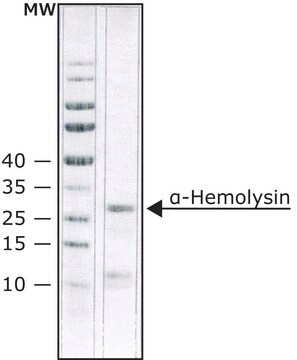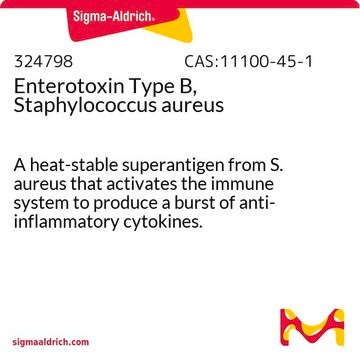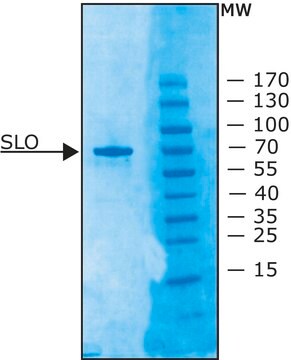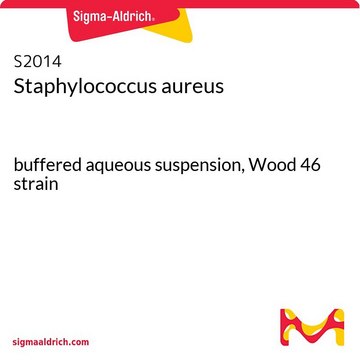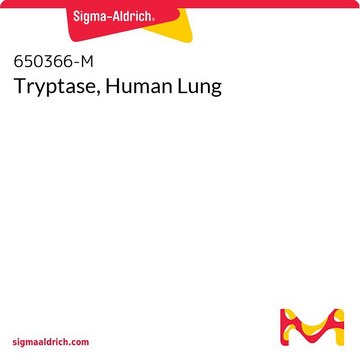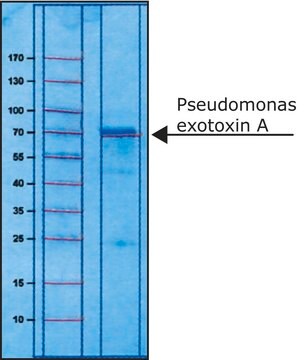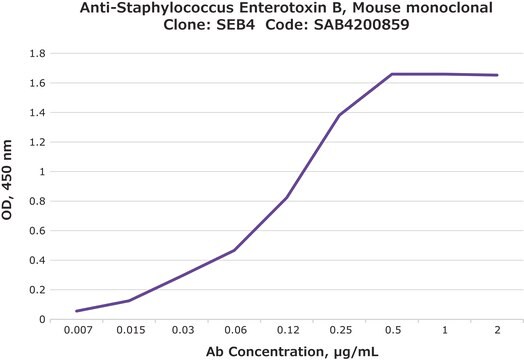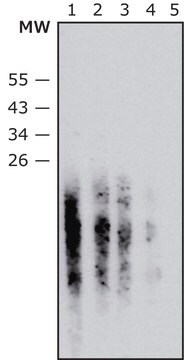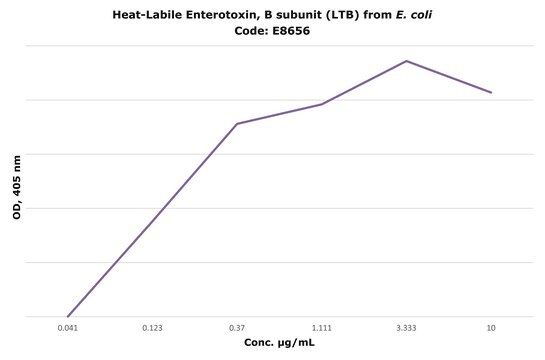推荐产品
成份
Contains ~50% protein (Lowry); balance primarily sodium chloride and sodium phosphate buffer.
品質等級
存貨情形
not available in USA
溶解度
H2O: soluble 0.50-0.60 mg/mL, clear to slightly hazy, colorless to faintly yellow
儲存溫度
−20°C
應用
TSST-1 has been used for superantigen stimulation in T cells. Furthermore, studies have reported that TSST-1 can induce TNF-α secretion in peripheral blood mononuclear cells (PBMCs)4,5.
生化/生理作用
Superantigen for T-lymphocytes.
準備報告
Toxic shock syndrome toxin-1 (TSST-1) is soluble in water at 0.50 - 0.60 mg/ml and yields a clear to slightly hazy, colorless to faint yellow solution.
訊號詞
Danger
危險分類
Acute Tox. 2 Dermal - Acute Tox. 2 Inhalation - Acute Tox. 2 Oral
儲存類別代碼
6.1A - Combustible acute toxic Cat. 1 and 2 / very toxic hazardous materials
水污染物質分類(WGK)
WGK 3
閃點(°F)
Not applicable
閃點(°C)
Not applicable
L Blanco et al.
Infection and immunity, 58(9), 3020-3028 (1990-09-01)
Toxic shock syndrome toxin 1 (TSST-1), a 22-kilodalton protein made by strains of Staphylococcus aureus harboring the chromosomal toxin gene, may elicit toxic shock syndrome in humans. In vitro, TSST-1 induces T cells to proliferate and macrophages to secrete interleukin-1.
M Ramírez et al.
International immunology, 11(9), 1479-1489 (1999-08-28)
The superantigen toxic shock syndrome toxin (TSST)-1 can induce tumor necrosis factor (TNF)-alpha expression in T cells and monocytes, through different signaling pathways. We have stimulated peripheral blood mononuclear cells with TSST-1 and found that the major cell producers of
M Buxadé et al.
Immunology, 102(4), 416-425 (2001-05-01)
Tumour necrosis factor-alpha (TNF-alpha) is a proinflammatory cytokine produced by several cell types, including T cells upon antigen stimulation. Its production is crucial for the development of an early defence against many pathogens, but its beneficial effects are dependent on
Khojasteh V Javid et al.
Iranian journal of microbiology, 3(4), 170-176 (2012-04-25)
The aim of study was to develop a rapid assay, dye labelled monoclonal antibody assay (DLMAA), using non-radioactive organic synthetic dyes for identification of Toxic Shock Syndrome Toxin-1 (TSST-1) producing strains of Staphylococcus aureus. The assay protocol required only two
P Marrack et al.
Science (New York, N.Y.), 248(4956), 705-711 (1990-05-11)
Staphylococcal enterotoxins and a group of related proteins made by Streptococci cause food poisoning and shock in man and animals. These proteins share an ability to bind to human and mouse major histocompatibility complex proteins. The complex ligand so formed
我们的科学家团队拥有各种研究领域经验,包括生命科学、材料科学、化学合成、色谱、分析及许多其他领域.
联系技术服务部门